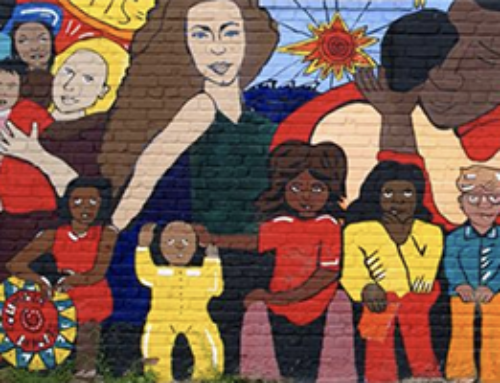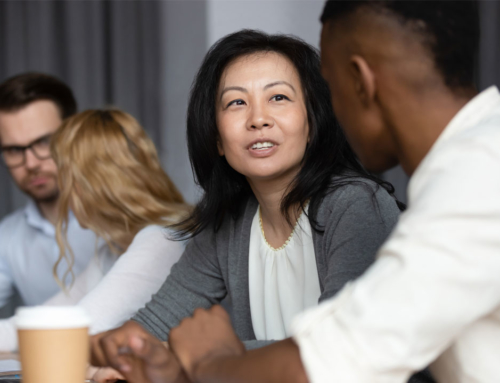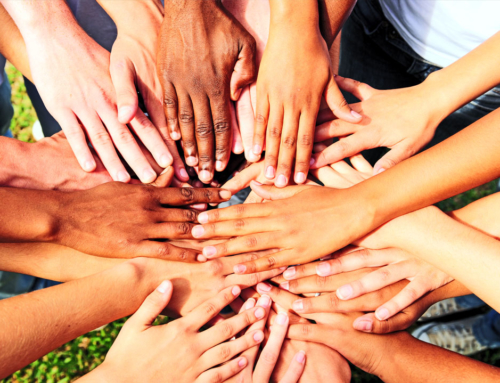by Albert K. Yee, MD, MPH, Strategic Advisor, CareQuest Institute for Oral Health
By now, most people have heard about the recent horrifying Atlanta murders where six out of eight victims were Asian Americans*. This was just the most dramatic incident in a series of attacks across the country, reflecting a trend since the beginning of the COVID-19 pandemic where there has been a significant increase in documented hateful and violent acts against Asian Americans – acts that continue to occur. These affronts and attacks are merely a continuation of a long history of prejudices, negative stereotypes and racism directed against Asian Americans. The recent surge of hateful acts specifically targeting Asian Americans (150% increase in 2020) is even more striking in stark contrast to a 7% decrease in overall hate crimes during the same period. They were fueled by public fear and the spread of inaccurate stories linking Asian Americans to COVID-19 and the pandemic. The previous administration further inflamed the situation through their efforts to scapegoat a foreign government and an American minority group to distract from their wholly inept and morally reprehensible handling of the pandemic that needlessly cost so many lives and caused much pain and suffering.
Just as the pandemic revealed the many inequities that exist in this country, it also peeled back the covering that concealed the longstanding racism directed against Asian Americans. It is now in plain view of the general public, many of whom are likely unaware of its long history, believing the recent hateful acts are a new phenomenon. On the other hand, most Asian Americans are all too familiar with racial bigotry through our daily life experiences and supplemented with what we have learned, mostly on our own, about Asian American history. Racist acts and policies against Asian Americans have existed as far back as the 1800’s. Some examples include documented murderous rampages such as mass killings and group lynchings; laws that prevented Asian Americans from immigrating to America, having the right to testify in court, attending integrated schools, interracial marriage, becoming citizens and having the right to vote; and internment in concentration camps during World War II. Asian Americans have been unjustly blamed for spreading disease (COVID-19, bubonic plague, etc.) and taking away jobs from “real” Americans. Racism and hateful acts against us have existed for a very long time and unfortunately continue to be alive and well today. Why is this history not more well known among the general American public?
Paraphrasing others, history is written by winners of wars. In their positions of power, victors choose what they deem is good and appropriate information for public consumption, including omitting history and stories about both the achievements of and the oppression against what is perceived as “insignificant” peoples in their eyes (often minority groups and people of color). Into this void, hateful and hurtful negative stereotypes form, take hold and become entrenched as the accepted “stories” and narratives that shape the public’s perceptions of Asian Americans. A few examples of these stereotypes include Asian Americans as perpetual foreigners (assume that we are all born in an Asian country and not in the United States and are frequently told to go back to where we came from), carriers and spreaders of disease (COVID -19 along with other examples in American history), women as exotic and hypersexualized (misogynists with fetishes for Asian women), emasculated men (prior laws not allowing marriage with white women and portrayed in the media as servile and docile) and the successful model minority (a myth created to divide racial minority groups and that also serves to make invisible the many Asian Americans struggling to make a good living like so many Americans). These and other stereotypes are readily accepted by many as representative of a highly diverse group of Asian Americans, which is of course inaccurate and even ludicrous, except for their serious ramifications. Each Asian American ethnic group has its own rich and exclusive history prior to and after arriving in the United States with subsequent generations carving out uniquely American-based stories of their own, not to mention the differences among all of us as individuals.
Committed and courageous activist individuals and social justice organizations have been fighting and continue to fight racism, seek to eradicate harmful stereotypes and strive to advance important Asian Americans issues. However, being a relatively small minority group in terms of numbers of people, it continues to be an uphill battle to gain the interest, traction and support necessary to get the broad attention of the America’s public – unless of course there are a pandemic and mass killings. Unfortunately, this is what it has taken to finally shine a modern-day spotlight on a problem that has existed since at least the 19th century. Asian Americans have had to learn to endure racism and hateful acts as a way of daily life, ranging from direct frontal assaults to being completely ignored as insignificant and everything in between. The vast majority of these acts are not documented and not in the public’s eye – they just happen. Asian American individuals react and adapt in their own ways to racism and hate with psychosocial, physical and economic consequences, often doing so in relative silence, just living their daily lives as best they can, like so many other oppressed groups. Historically, there have been little interest in and demand for stories and the collection of data about Asian Americans (often in the “Other” category or “too small a number to analyze”). Accordingly, very little good information makes it to mainstream media and the general public to combat longstanding stereotypes and break through the silence to bring attention to the history of racism perpetrated against Asian Americans – until now.
The dangers and harm caused by racism have been compared by some to the existence and spread of a potent and deadly virus during a pandemic. However, the analogy falls short as a pandemic will end after a few years, and even sooner with current technological advances and vaccines. If only efforts to end racism can be just as fast and “simple.” Unfortunately, it will take much more time and committed, concerted and collective efforts from all of us to succeed. Racism is a learned behavior and can be “unlearned” if there is the desire and will to do so – starting with self-reflection and acting on any internal biases.
Specific to the recent spate of hateful acts and blatant racism against Asian Americans that are now obvious for everyone to see, I applaud all the efforts of Asian American leaders and others across the country who are calling attention to them with the goal of finding anti-racist solutions to prevent further hateful acts. Strong support from allies crossing all demographic groups have been critically important and are deeply appreciated. For those who are interested in helping to end the centuries-old racism against Asian Americans, but have not yet acted, start by learning about aspects of Asian American history – the good, the bad and the ugly – and listening to our stories based on our diverse life experiences. Truly getting to know one another will bring an end to negative stereotypes, lead to the dismantling of conscious and unconscious biases and replace them with a more positive understanding and a deeper appreciation of humanity’s diversity.
Ignorance is NOT bliss. Ignorance is……just ignorance. Take the opportunity to know better someone that is different from oneself. Only by doing this at an individual level and being open to dealing with any personal biases can we all then come together in solidarity as allies to address and eliminate longstanding institutions and structures that perpetuate racism against Asian Americans – and all peoples of color in our country. Let us unite to change how America has been treating people of color throughout its history and in the spirit of elevating the best that humanity has to offer, strive for the lofty and admirable ideals that our country stands for and that we all aspire to achieve together.
*Asian Americans are a very heterogeneous population group, and in this blog, the term, Asian Americans, refers to people living in America who are from, or are descendants of people from, countries in Asia.








Leave A Comment
You must be logged in to post a comment.